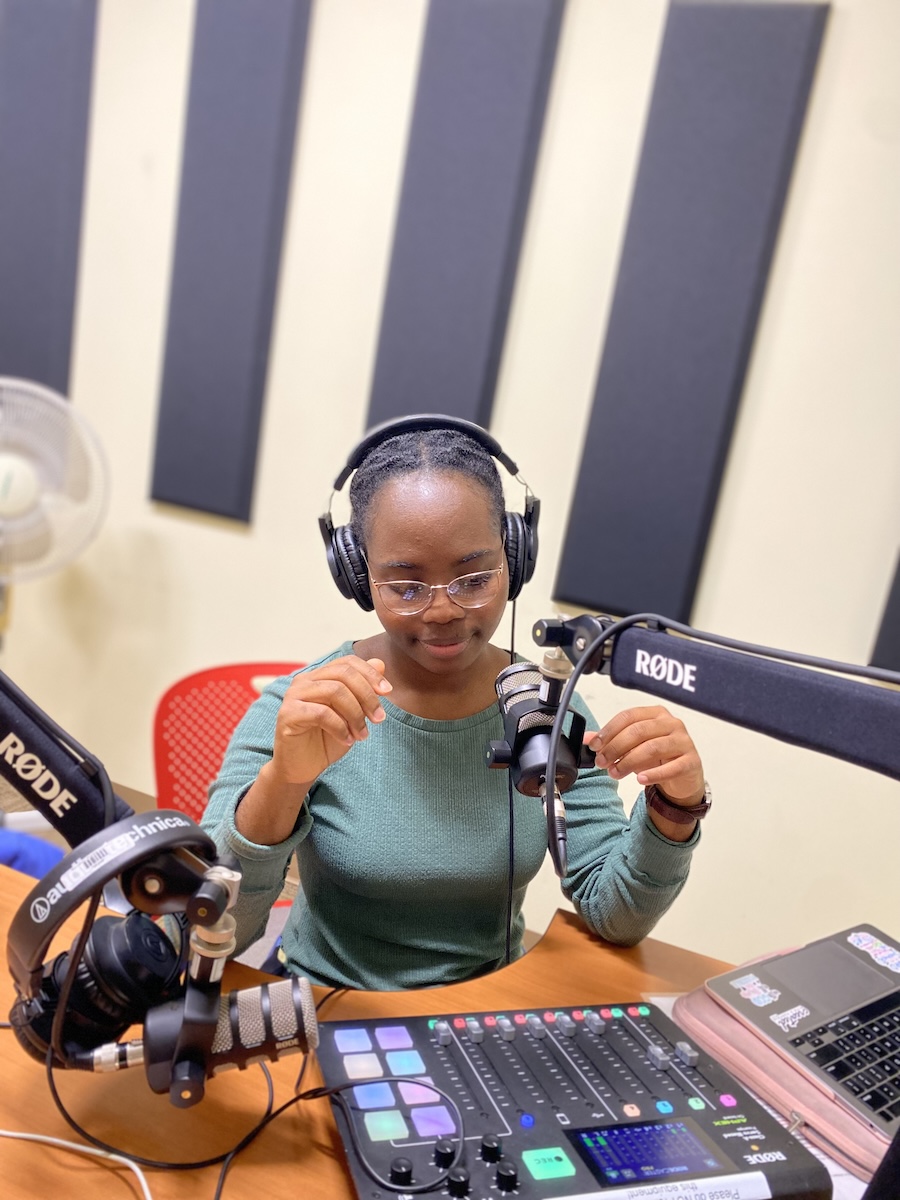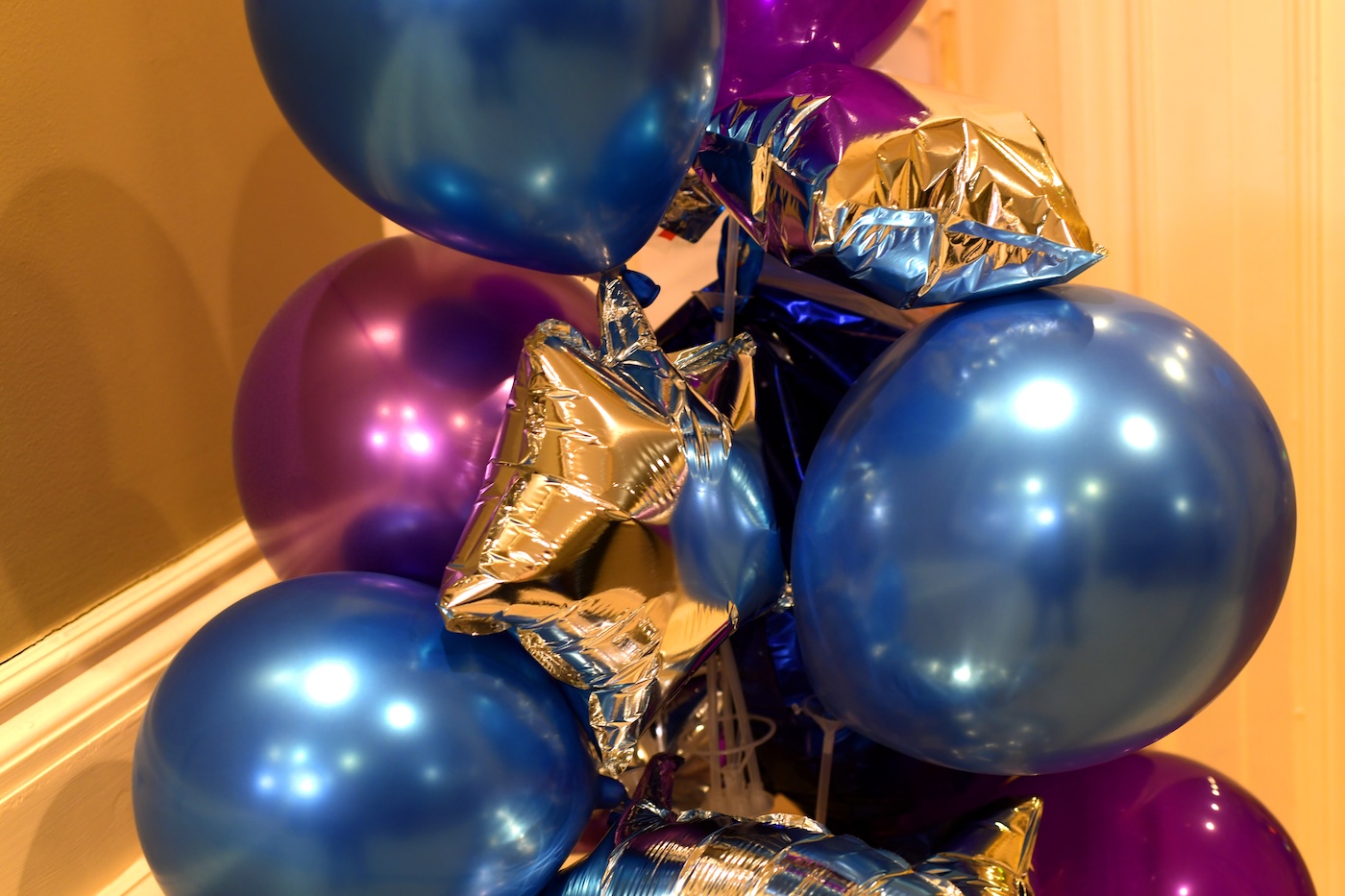Students Honored at Sarah and James Bowdoin Day 2017
By Tom Porter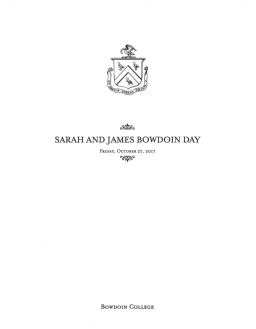
Bowdoin celebrated academic excellence at the College’s annual Sarah and James Bowdoin Day Friday, October 27, 2017. The ceremony was held in Pickard Theater, Memorial Hall.
Sarah and James Bowdoin scholarships are awarded each fall on the basis of work completed the previous academic year. They are given to the top 20 percent of students who have the highest grade point average. Each scholar who earned a GPA of 4.0 also receives a Book Award, which bears a replica of the early College bookplate found on books in Hawthorne-Longfellow Library’s James Bowdoin Collection. In this year’s ceremony, 244 students were named Sarah and James Bowdoin scholars, thirty-two of whom received Book Awards.
President Clayton Rose, in his welcome address, said that the honors being offered on this day “are not easily earned. Ours is a rigorous academic program,” he continued, “with standards of excellence that are challenging and expectations set by faculty that are very hard to meet. The outstanding level of achievement demonstrated by these students requires intense focus, a deep pride in one’s work, and a passion for learning, and it warrants our full appreciation and great celebration.”
The annual fall ceremony includes two addresses, one delivered by a highly recognized practitioner in one of the liberal arts disciplines—from Bowdoin or elsewhere—and a student address delivered by an outstanding Bowdoin student. This year’s guest speaker was Associate Professor of Biology and Neuroscience Hadley Horch. Ian Ward ’20, gave the student address.
Ward’s address was called Homo loquens: Speaking Latin and Living the Liberal Arts. He described the curious responses he often gets when he tells his fellow students that he speaks Latin. “In the past three decades, the classical community has witnessed a resurgence of interest in oral and conversational Latin,” said Ward. “Now showing signs of life,” he continued, “Latin has been dubbed a ‘zombie language:’ not vibrantly alive, yet not entirely dead.”
Ward, who plans to major in history and minor in classics, goes further than that however. “Far from a zombie language, Latin is a Lazarus language, proving humankind’s inexhaustible ability to inspire others and to be inspired by itself.” The study of Latin, he said, “illuminates our present by letting us peer into the past.”
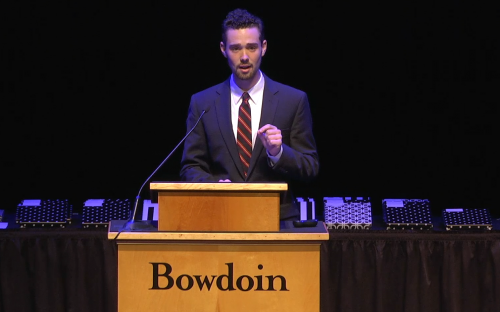
He and his fellow Latin-speakers on campus will join a national program to promote Latin literacy this coming winter, when they will start teaching Latin to local elementary school students. “As a slew of recent research suggests,” said Ward, “students with even a basic knowledge of Latin achieve greater gains in reading and vocabulary skills when compared with their non-Latinate peers.”
Horch’s address was called Taking a Peek at Our Brains: Zombies, Mutants, and Grandmothers, in which she shared three of her favorite neuroscience stories—stories which have taught her “something new and surprising.”
She ponders the zombie-like state that ants fall into when infected by particular fungal spores, and asks how the brains of living creatures, including humans, can sometimes appear to be taken over by external life forms.
Horch’s second story considers “the enormity of the challenge of growing a nervous system from scratch.” When it comes to studying this, said Horch, “one of the simplest and most informative [systems] is found in the developing fruit fly.” Furthermore, scientists “purposefully but randomly create mutations in the genome of individual flies.” By identifying and studying the mutated gene, said Horch, neuroscientists “can infer the normal function of that gene.”
Her final story tries to understand the human brain by asking the following question: “How do you recognize your grandmother?” In the last few years, she said, neuroscientists have made an “incredible” discovery about how individual brain cells can respond to pictures of individual people.
“Families, parents, and relatives,” said Horch, “even though your kids may be far away, rest assured—you are represented in a neuronal circuit within that student’s head. You are a constellation within the universe of their minds.”
The Almon Goodwin Prize was awarded to seniors Margaret Marie Conley, Lindsey Whidden Duff, and Andrew Philip Prescott. This award is presented to one or more members of Phi Beta Kappa chosen by a vote of the Board of Trustees of the College.
Other Phi Beta Kappa members are Jamie Lynn Ptacek from the Class of 2017 and these members from the class of 2018:
Caroline Maisie Benson
Alison Melissa Carroll
Sophie Rebecca Cowen
NIcholas John DiStefano
Sara Barbara Spicer
Rayne Kellen Stone
Samuel Elias Swain
Jessica Ruth Webber
For the ceremony’s processional, pianist George Lopez, Bowdoin’s Beckwith Artist in Residence, performed the fifth movement of Partita no.2 in D Minor by Johann Sebastian Bach, and for the recessional he performed the sixth movement of Bach’s Partita no.3 in E Major, arranged by Sergei Rachmaninov. Lopez also accompanied the singing of the alma mater, “Raise Songs to Bowdoin.”
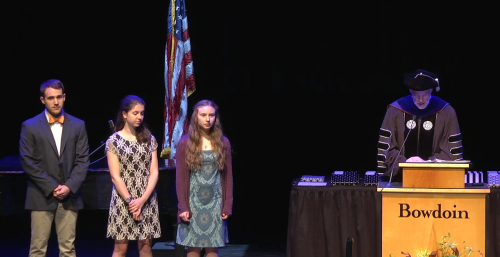
Bowdoin began recognizing James Bowdoin scholars in 1941 to honor undergraduates who distinguish themselves by excellence in scholarship and to commemorate the Honorable James Bowdoin III (1752-1811), the College’s first patron. James Bowdoin III–who asked that the institution be named after his father–was an agriculturist, art and book collector, and diplomat who served as Thomas Jefferson’s minister plenipotentiary to Spain.
By faculty vote in 1997, this commemorative day and scholarly distinction were changed to recognize both Sarah and James Bowdoin, who were married from 1780 until his death in 1811. Like her husband, Sarah Bowdoin gave many gifts to the College, including most of the Bowdoin family portraits which were bequeathed to Bowdoin College upon her death.

